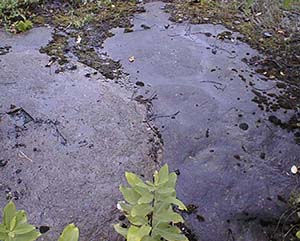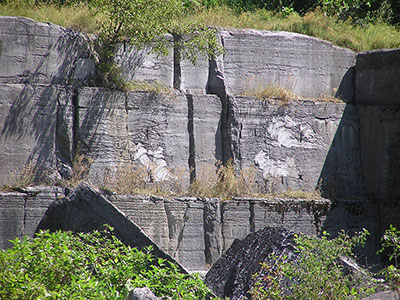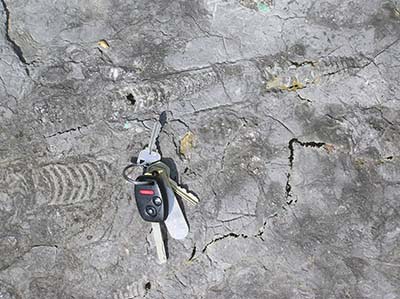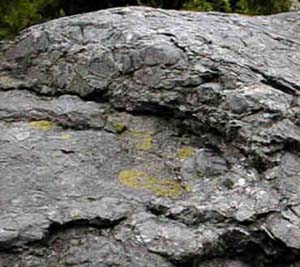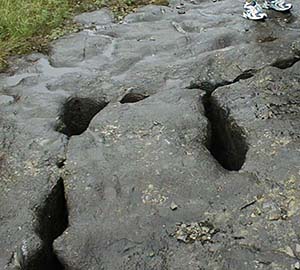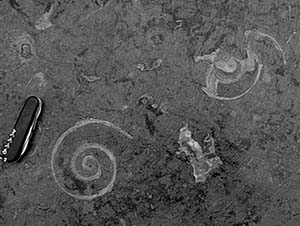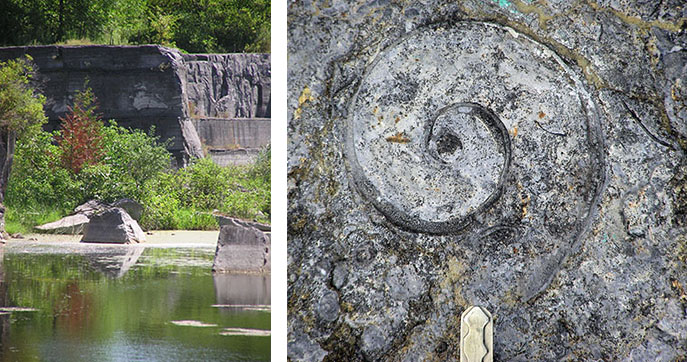
Condensed from text by Dr. Charlotte Mehrtens, Vermont Geological Society Summer Field Trip, 1998.
Photos: M. Gale and J. Kim
There is a tremendous range of definitions for what constitutes a "reef", from the liberal "anything that would break the bottom of a boat" to those definitions which require recognition of the ecological relationships between organisms. Following the discussion of James and Bourque (1992) the Chazy buildups are most appropriately termed "mounds" and not reefs due to the carbonate mud matrix surrounding the framework organisms. The sediment between the mounds is coarser-grained, often cross bedded packstone and grainstone. The mounds were capable of building vertically into the surrounding water column, and thus modified their surrounding environment. These rocks are often called "The World's Oldest Coral Reefs" (Raymond, 1924), but could be more appropriately termed "The World's Oldest Reefs in Which Coral Occur," but that's a little wordy. Although coral are present, they were recent developments in the biotic world and were not the dominant framebuilder. Bryozoa and stromatoporoids were more successful builders of the reef, along with stromatolites. Non-framework organisms are diverse and include echinoderms, brachiopods, gastropods, trilobites and cephalopods; the usual cast of characters in the Middle Ordovician seas.
The faunal changes through the Chazy reefs have been identified as representing "succession" in the reef community over time (Pitcher, 1964). In many reefs, the initial framework builder, for example, bryozoa, are vertically capped by another framework builder, for example, a stromatolite. In other words, over the lifespan of a reef horizon the environment was best suited for the morphology and function of one group of organisms, and as the buildup accreted into shallower water, another group of organisms was better adapted to this new environment.
Since Pitcher's paper, paleontologists' understanding of succession has deepened and they now differentiate between "allogenic" and "autogenic" succession. Autogenic succession represents faunal or floral changes which were internally driven by progressively better adapted groups of organisms (pioneer-diversified-climax communities). Allogenic succession is interpreted to represent faunal or floral changes in response to external changes to the environment. In the case of a reef, sea level change would be a prime example of an external change.
The significance of recognizing reefs or mounds of Ordovician age in Vermont is great. First, the occurence of reefs in modern environments at 20-30 degrees parallel to the equator provides a strong paleo-latitudinal control for this portion of Vermont 460 million years ago. Second, the narrow bathymetric control on modern reefs provide us with a constraint on water depth for these rocks. Third, the detailed orientation of the mounds (roughly aligned in a north-south belt using current geographic coordinates) constrain the local paleogeography: the Iapetus Ocean was to the east, Laurentia lay to the west, and this region sat on the platform margin bordering deep water.

